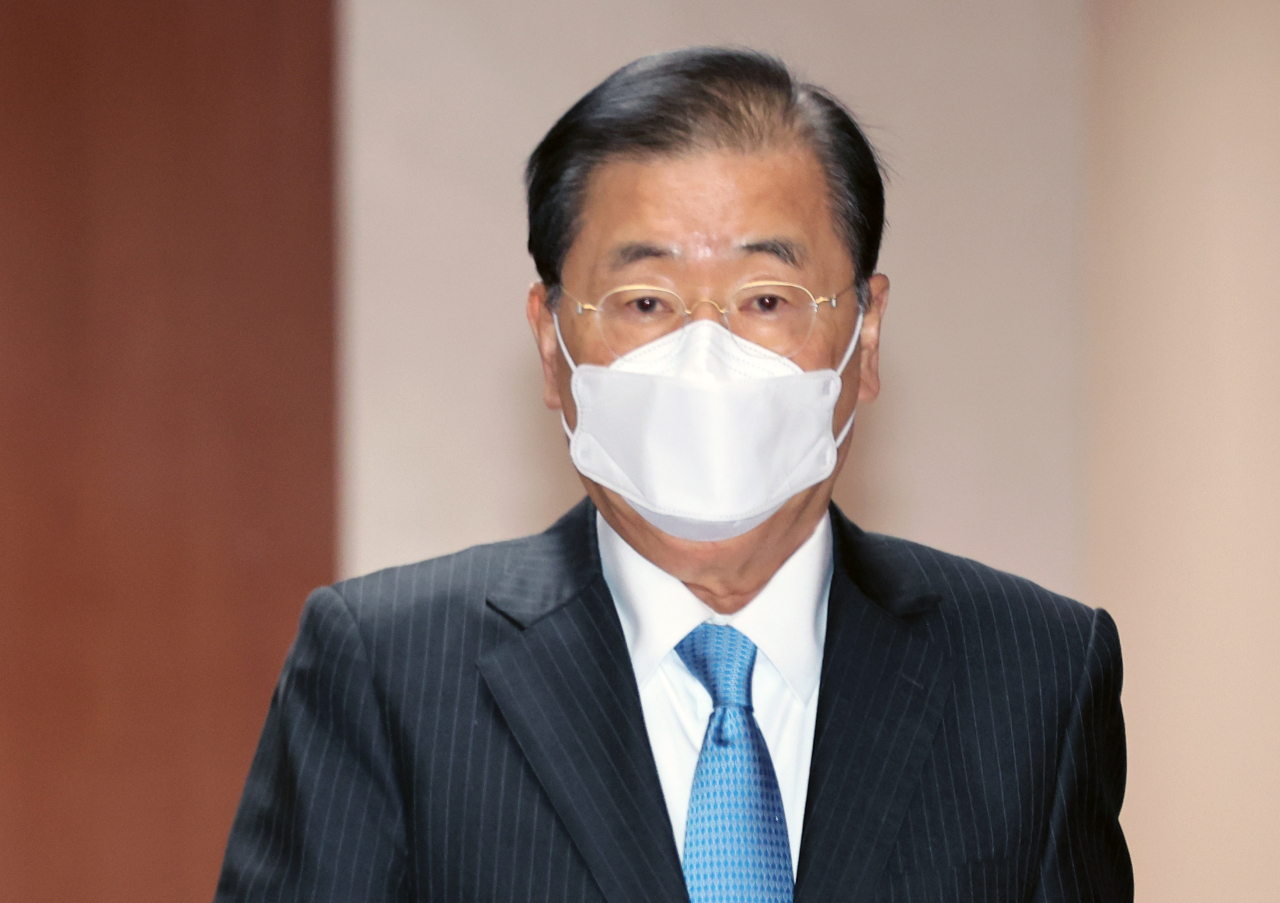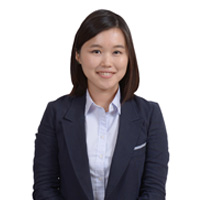FM Chung protests Japan’s Sado mine heritage push in his first call with Hayashi
By Ahn Sung-miPublished : Feb. 3, 2022 - 17:28

South Korean Foreign Minister Chung Eui-yong on Thursday expressed deep disappointment and protested against Japan’s recent decision to seek a UNESCO World Heritage List designation for the gold mine on the island of Sado, which is associated with the wartime abuse of Korean laborers, in his first phone call with his Japanese counterpart, Yoshimasa Hayashi.
Their conversation came just days after the Japanese government on Tuesday decided to go ahead with the listing of the Sado mine in Niigata prefecture, defying strong opposition from Seoul against the nomination due to the facility’s use of forced labor from the Korean Peninsula. It also marked the first time the two envoys held a phone call since Hayashi took office last November.
“Chung pointed out that proper historical awareness is the foundation of future-oriented development of South Korea-Japan relations, and expressed deep disappointment and protested against the Japanese government’s decision to recommend Sado mine on the World Heritage List, neglecting the painful history of forced labor of South Koreans,” the ministry said in a statement.
More than 2,000 Koreans are said to have been forced to work at the mine from 1939 to 1945, when the Korean Peninsula was under Japan’s colonial rule, according to historical documents. But Japan has not mentioned the forced labor issue in its recommendation, instead stressing that the site is valuable to Japan’s industrial history as the world’s top producer of gold in the 17th century.
Chung also strongly urged Tokyo to fulfill its pledge to honor victims of wartime forced labor at its other UNESCO heritage sites.
Japan opened its Industrial Heritage Information Center in July last year, introducing 23 modern sites from Japan’s Meiji era added to the UNESCO World Heritage List, including the notorious Hashima Island, also known as Battleship Island, where many Koreans were forced into labor during World War II.
Tokyo had promised to showcase a display honoring Korean victims of forced labor when the sites were listed in 2015, but the new center only highlighted Japan’s industrial accomplishments.
Chung called on Hayashi for Japan’s active stance to seek a solution that the victims could accept, in regards to the issue over South Korean victims of Japan’s wartime sexual slavery and forced labor. He additionally conveyed the Seoul government’s stance on Japan’s export controls and the releasing of the Fukushima wastewater, according to the statement.
The two ministers expressed “deep concern and regret” over North Korea’s intermediate-range ballistic missile launch on Sunday, and pledged to continue cooperation between the two countries, as well as with the US, for the stable management of the peninsula situation and resumption of talks at an early date.
Their conversation came just days after the Japanese government on Tuesday decided to go ahead with the listing of the Sado mine in Niigata prefecture, defying strong opposition from Seoul against the nomination due to the facility’s use of forced labor from the Korean Peninsula. It also marked the first time the two envoys held a phone call since Hayashi took office last November.
“Chung pointed out that proper historical awareness is the foundation of future-oriented development of South Korea-Japan relations, and expressed deep disappointment and protested against the Japanese government’s decision to recommend Sado mine on the World Heritage List, neglecting the painful history of forced labor of South Koreans,” the ministry said in a statement.
More than 2,000 Koreans are said to have been forced to work at the mine from 1939 to 1945, when the Korean Peninsula was under Japan’s colonial rule, according to historical documents. But Japan has not mentioned the forced labor issue in its recommendation, instead stressing that the site is valuable to Japan’s industrial history as the world’s top producer of gold in the 17th century.
Chung also strongly urged Tokyo to fulfill its pledge to honor victims of wartime forced labor at its other UNESCO heritage sites.
Japan opened its Industrial Heritage Information Center in July last year, introducing 23 modern sites from Japan’s Meiji era added to the UNESCO World Heritage List, including the notorious Hashima Island, also known as Battleship Island, where many Koreans were forced into labor during World War II.
Tokyo had promised to showcase a display honoring Korean victims of forced labor when the sites were listed in 2015, but the new center only highlighted Japan’s industrial accomplishments.
Chung called on Hayashi for Japan’s active stance to seek a solution that the victims could accept, in regards to the issue over South Korean victims of Japan’s wartime sexual slavery and forced labor. He additionally conveyed the Seoul government’s stance on Japan’s export controls and the releasing of the Fukushima wastewater, according to the statement.
The two ministers expressed “deep concern and regret” over North Korea’s intermediate-range ballistic missile launch on Sunday, and pledged to continue cooperation between the two countries, as well as with the US, for the stable management of the peninsula situation and resumption of talks at an early date.









![[Kim Seong-kon] Democracy and the future of South Korea](http://res.heraldm.com/phpwas/restmb_idxmake.php?idx=644&simg=/content/image/2024/04/16/20240416050802_0.jpg&u=)








![[KH Explains] Hyundai's full hybrid edge to pay off amid slow transition to pure EVs](http://res.heraldm.com/phpwas/restmb_idxmake.php?idx=652&simg=/content/image/2024/04/18/20240418050645_0.jpg&u=20240418181020)

![[Today’s K-pop] Zico drops snippet of collaboration with Jennie](http://res.heraldm.com/phpwas/restmb_idxmake.php?idx=642&simg=/content/image/2024/04/18/20240418050702_0.jpg&u=)